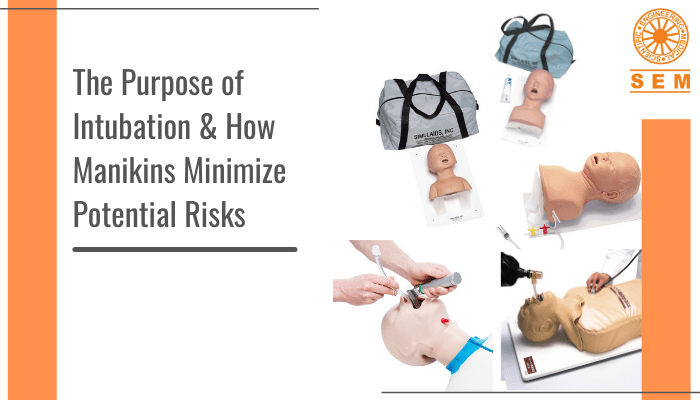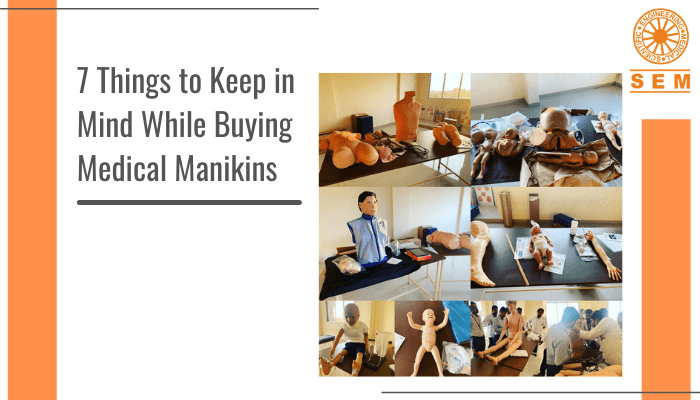The Purpose of Intubation & How Manikins Minimize Potential Risks
We live in a world where immediate, urgent care is at our fingertips. It is now easier to save lives. This couldn’t have been done without the use of medical manikins in training medical aspirants. The benefits of simulation training are manifold. Today, we will discuss the purpose of intubation and the role of medical manikins in reducing the risks associated with it.
What is Endotracheal Intubation?
If you have been the unfortunate victim of a brutal accident and cannot breathe, one of the first things the paramedic or healthcare professional will do is intubation. The ultimate purpose of this procedure is to save lives when people can’t breathe. In this procedure, the paramedic will guide an endotracheal tube (ETT) into your mouth/nose, voicebox, and then the trachea(the windpipe) after locating your vocal cords through a laryngoscope, which is a small instrument with a light. Since you won’t be able to breathe naturally, this tube will hold the airway open so that air can get to your lungs. Essentially, intubation is used to help a person breathe when he can’t breathe on his own regardless of whether it’s the result of an injury. It is usually performed in the hospital, during an emergency, or before surgery.
Risks Associated with Intubation (and the role of manikins)
Keeping in mind that it is an emergency procedure, and that an entire tube is guided through to the trachea, there are some risks involved:
- The person’s teeth may be injured due to the forces applied to the maxillary incisors during the process
- There may be an injury to the throat or the trachea
- Too much fluid may build up in organs or tissues
- There may be bleeding
- Occasionally, it can cause a lung complication or injury
- Acids and other contents from the stomach may end up in the lungs (this is called aspiration). The person may inhale vomit, blood, or other fluids
- A person may develop an infection, like a sinus infection
- Endobronchial intubation: The tube may further go down one of the two bronchi
- Esophageal intubation: The tube may go down your esophagus (the food pipe) instead of the trachea
- Finally, the intubation might not even work
As a beginner proceeds to perform this on a manikin, he is more relaxed and focussed, and less afraid of the consequences of a mistake. These days, we have manikins with incredibly lifelike anatomical landmarks that respond to the process and also give real-time feedback for incorrect intubation. For this procedure, at least, learners cannot be given the opportunity to practice by operating on real patients, given the number and intensity of risks involved.
If you want to purchase professional-quality intubation manikins for your training programs, look no further. At SEM Trainers, we deliver state-of-the-art manikins to help you with your training needs:
Intubation Head for CPR
This head packed with lifelike anatomical details helps practice a full range of airway management techniques. It helps in double nasotracheal intubation, bag and mask ventilation techniques, supraglottic devices, direct laryngoscopy, endotracheal tube insertion, awake fiber optic examination, and combi tube insertion.
Nasogastric Intubation Model
This one comes with a median section through the nose, mouth, pharynx, trachea, esophagus, and stomach, giving your learners a better idea of what’s happening. It also includes a tracheostoma to show endotracheal aspiration.
Child Intubation Head
Manikin of a 3-year-old for training nasal and oral intubation skills. This one comes with inflatable lungs and stomach, and anatomical landmarks.
Endotracheal Intubation Simulator
Endotracheal intubation is an extremely skilled procedure and carries the most risks. That is why you should first train your learners on this simulator before going on to real patients. It helps practice oral and nasal tracheal intubation, use of the laryngoscope, securing airways, handling supraglottic airway devices, and determining ventilation and accidental oesophageal intubation among others.
Infant Intubation Head
An infant manikin for the practice of nasal and oral intubation skills on an infant. Like the child intubation head, this comes with inflatable lungs and stomach, and anatomical landmarks.
Advanced Infant Intubation Head with Board
With its new skin technology, exceptional durability, and lifelike appearance (and a lightweight stand), this makes for an excellent manikin for pediatric airway training. What’s advanced about this one, you ask? Well, with the new material, the airway won’t tear up, and you won’t have to take it for costly repairs every time a student makes a mistake. And because this new skin is translucent, you will be able to see the airway and neck illuminate.


